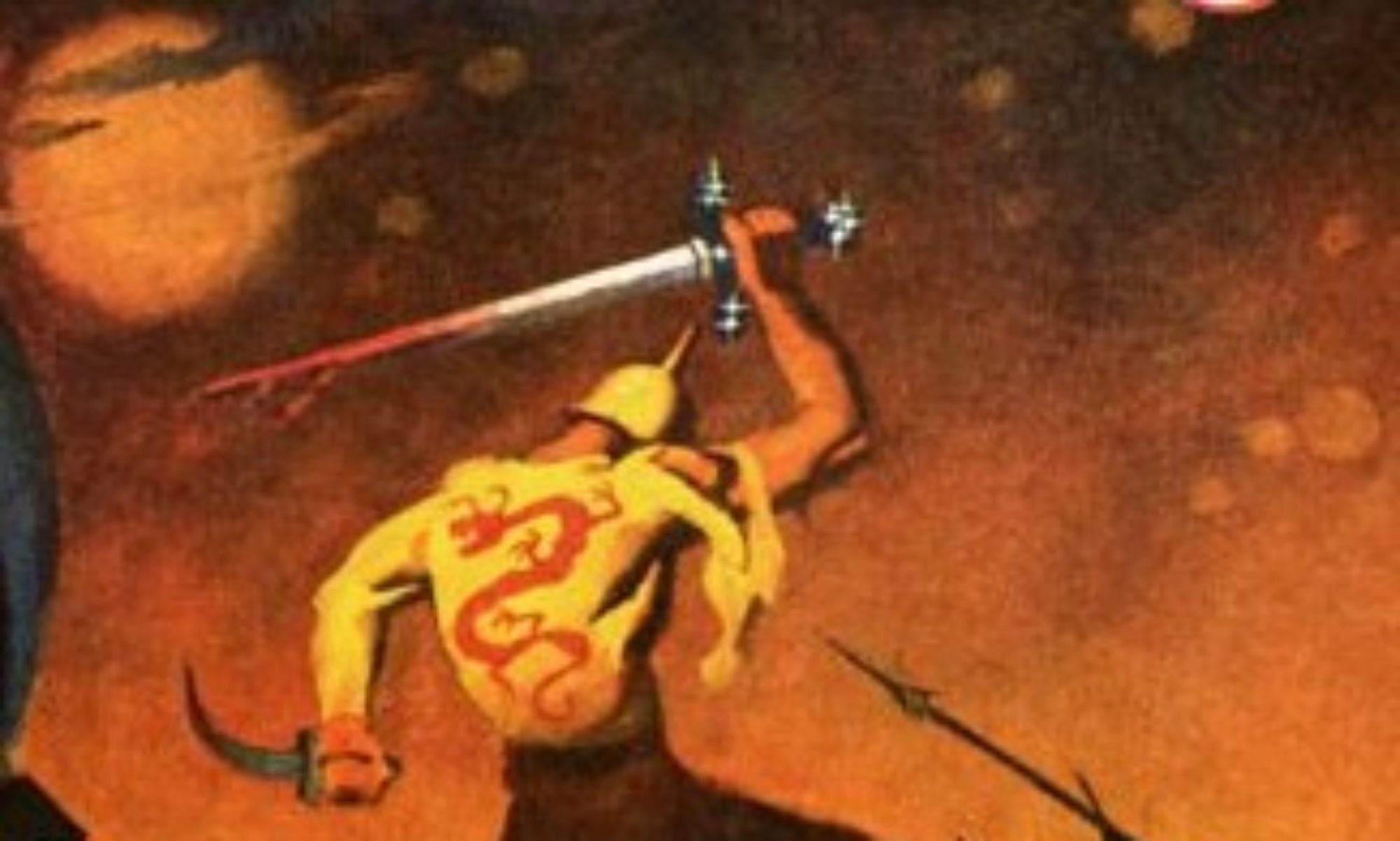This is a short novel. It follows the adventures of an imperial surveyor on a world with bronze-age technology, now being terrorized by another interstellar power. It is evidently the first of her Hainish cycle of stories. It was first published in 1966. My copy is an original Ace paperback from that time.
As usual, any significant spoilers will be put in parentheses (like this).
Events from a half-century ago bring Rocannon the surveyor to the unnamed planet to study its people. He settles in with the descendants of a woman he met that half-century ago that left an impression on him – his life having been extended by being suspended in multiple interstellar voyages. The nearest planet from the League of All Worlds is 8 years away.
After having been on the planet a short time and befriended some of the natives – an apparent feudal-like warrior culture – his team and their ship are destroyed, along with several other native settlements. So he sets of on a quest to a remote area of the planet to get to the base of the enemy, and send a message out to the League.
The journey is what would be today considered a fairly typical quest storyline, involving long travels and misfortunes and encounters with mysterious figures and races. It is solid storytelling, and it can be read in a single sitting, though I broke it up into a chapter each night, so about a week it took me.
Nothing is particularly groundbreaking here. There are some observations on race and class and heroism. None of the mysterious beings encountered are particularly explained, but that does not detract from the story.
There is a pervading sense of sadness, and impending doom for some characters. Even the hope is tinged with gloom. I didn’t feel this detracted from the read, though.
Everything is sketched broadly, from the native cultures to the interstellar civilization. The League, and their nemesis in the book which constitute the enemies, are ill-defined. So is the technology that requires years of sub-light travel, but instantaneous communication and missile/weapon strikes. In fact, the “ansible” – the device that made instantaneous interstellar communication possible – was first used as a device here and has since been used in wider science fiction.
I think I remember the author scoffing at grouping the Hainish novels as a tight vision. Some of the other works in the series include The Dispossessed, The Left Hand of Darkness, and The Word For World is Forest. I read the last of these titles in college, many moons ago. I remember its characterization of the interstellar League to be similarly sketchy. This is not really a weakness, as these entities affect the story just as needed.
One other thing I want to touch on is the quality of the prose, which is very good. Writing of this nature is a lost art. Sometimes it is difficult to know what she is saying, and a few passages I had to re-read to understand the action or whatever was being conveyed. I think this is a good thing. There is no extra verbiage to fill things out. What needs to be said is said in an artful way. This can sometimes lead to a certain distance between the reader and the story that modern readers may not relate to. The writing is certainly not a visceral as the better of modern authors, but that is not a bad thing.
Overall, a good read. This is essentially a high fantasy book, or science fantasy, though such distinctions don’t really matter. I recommend it.


Now I’m going to have to seek this book out. Sounds interesting.
Hey, Narmer!
It’s a nice little read with some cool ideas. Nothing groundbreaking or essential, but still a good book. It’s been reprinted a bunch of times, often in a bundle volume with some other books in the loose Hainish Cycle. There was a Science Fiction Book Club edition with two others, called Three Hainish Novels or something. Hope you like it!